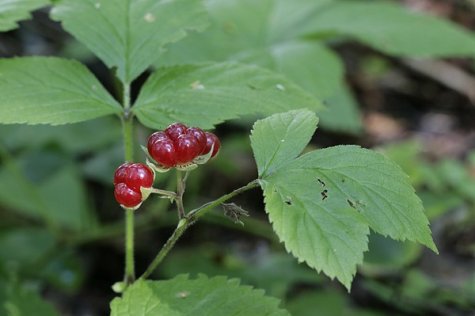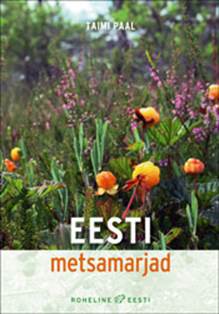Stone brambles ripening
Photo Arne Ader
Translation Liis
Stone bramble
Stone bramble Lillakas Rubus saxatilis
Stone brambles prefer a humid and lime-rich habitat: they are common in spruce as well as mixed spruce forests, broad-leaved forests and swamp forests all over Estonia. In favourable conditions they spread extraordinarily fast, with creeping runners that may be the length of a full-grown man. For instance in fellings where light condiions unexpectedly improve and the root competition eases, the plants may cover the whole ground and even suffocate tree saplings.
The leaves of cloudberries are smaller, but similar to the leaves of the stone bramble, that have serrated margins and consist of three leaflets. The runners have only small spines but on being caught up in plants growing in light condittions legs can get scratched.
The beautiful shiny and fleshy red drupes are set on the stalk one to five together. The seed is large, the fleshy outer layer thin. Tasty, sourish, containing useful substances but the desire to eat them is soon satisfied.
Birds like eating them and spread the seeds.
The book ”Eesti metsamarjad – Estonain wild berries“, has been published, author Taimi Paal, publisher Varrak
Almost all native Estonian plants whose fruits people call berries are collected into the book. It is not only about edible berries but also about those that that for beginners can cause health problems when used as a herb, on sampling or eating. To make it more interesting for the reader the fate of the berry plant species is considered in their whole distribution area.. The author also writes how the plants are used in folk medicine. The active substances found in the plants are sometimes much more effective and gentler to the body than synthetically produced medicines.










